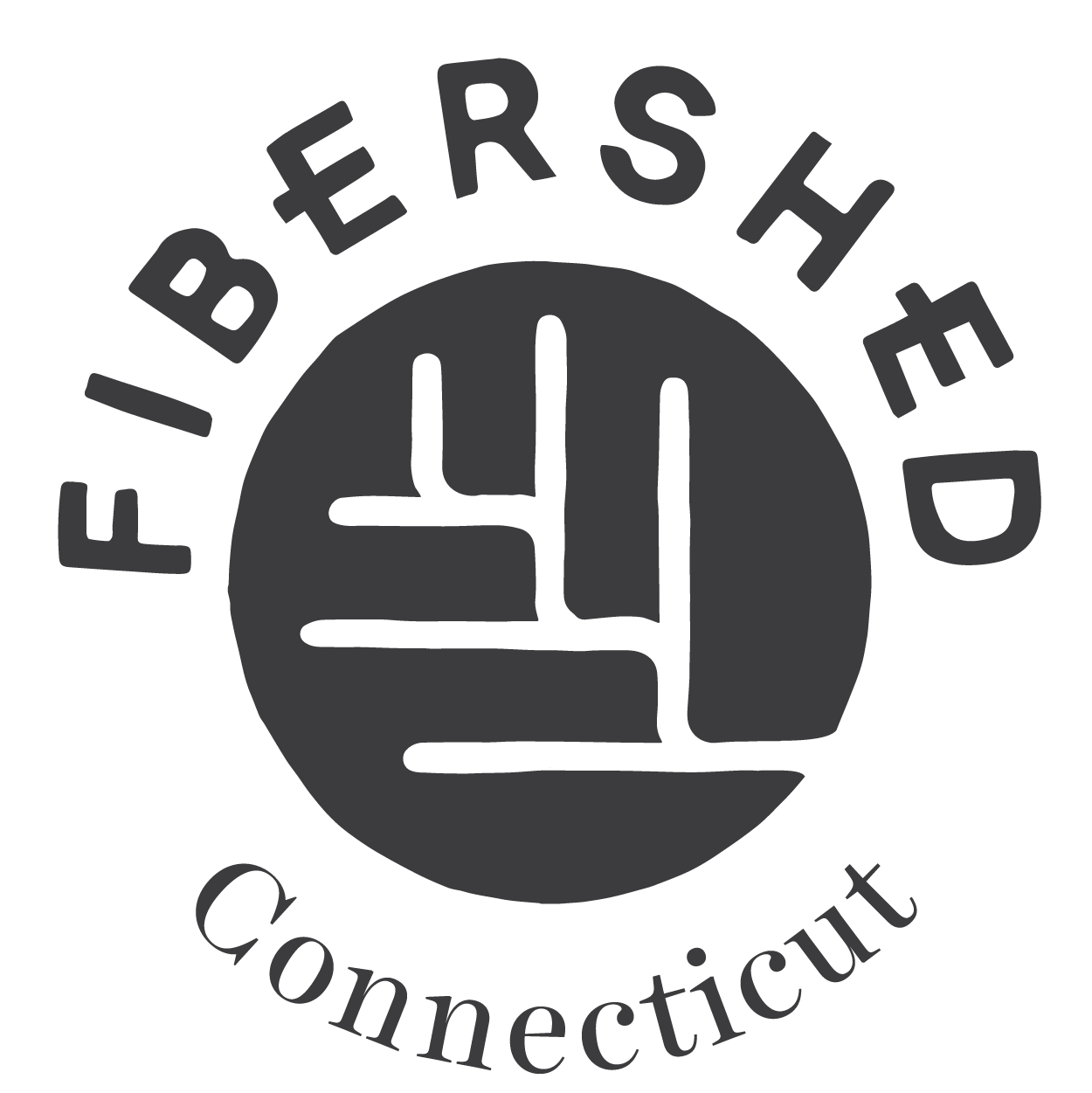Are you a farmer or artisan wanting to let people know that your work supports regional agriculture, a local and fair economy, and ecological balance?
We are an affiliate of the California based Fibershed non-profit. We are growers, farmers, artisans, and business owners with a strong belief in growing a local and sustainable farm to fashion network.
If you are looking to be a part of the Connecticut Fibershed, we would be happy to speak with you regarding eligibility.
All members of the Connecticut Fibershed will be recognized as sharing a core set of values:
- Your resource base is in the State of Connecticut
- All fiber is farmed and sourced in state
- All fiber is milled within the State of Connecticut
- All the labor to create your goods is sourced in Connecticut
- Botanical dyes are used in your goods
Exceptions to the rule may include:
- Sewing notions (zippers, grommets, buttons, silk backing for felting)
- Milling of some fibers, including cotton (as some milling is not yet provided in the state.)
We are an active group of fiber growers, mills, and artisans willing to share a story. Follow us on FB and IG.
Main Mission of The Fibershed
Fibershed develops regional and regenerative fiber systems on behalf of independent working producers, by expanding opportunities to implement carbon farming, forming catalytic foundations to rebuild regional manufacturing, and through connecting end-users to farms and ranches through public education.
We envision the emergence of an international system of regional textile communities that enliven connection and ownership of ‘soil-to-soil’ textile processes. These diverse textile cultures are designed to build soil carbon stocks on the working landscapes on which they depend, while directly enhancing the strength of regional economies. Both fiber and food systems now face a drastically changing climate, and must utilize the best of time-honored knowledge and available science for their long-term ability to thrive.
As each Fibershed community manages their resources to create permanent and lasting systems of production, these efforts to take full responsibility for a garment’s lifecycle will diminish pressure on highly polluted and ecologically undermined areas of the world. (China produces 52% of the world’s textiles. The industry is the third largest fresh water polluter in the country.) Future Fibershed communities will rely upon renewable energy powered mills that will exist in close proximity to where the fibers are grown. Through strategic grazing, conservation tillage, and a host of scientifically vetted soil carbon enhancing practices, our supply chains will create ‘climate beneficial’ clothing that will become the new standard in a world looking to rapidly mitigate the effects of climate change. We see a nourishing tradition emerging that connects the wearer to the local field where the clothes were grown, building a system that can last for countless generations into the future.
How did the Fibershed project start?
The project began in 2010 with a commitment by its founder, Rebecca Burgess, to develop and wear a prototype wardrobe whose dyes, fibers and labor were sourced from a region no larger than 150 miles from the project’s headquarters. Burgess had no expected outcomes from the personal challenge other than to reduce her own ecological footprint and maybe inspire a few others.
Burgess teamed up with a talented group of farmers and artisans to build the wardrobe by hand, as manufacturing equipment had all been lost from the landscape more than 20 years ago. The goal was to illuminate that regionally grown fibers, natural dyes, and local talent was still in great enough existence to provide this most basic human necessity—our clothes. Within months, the project became a movement, and the word Fibershed and the working concept behind it spread to regions across the globe. Burgess founded Fibershed’s 501c3 to address and educate the public on the environmental, economic and social benefits of de-centralizing the textile supply chain.
For more information on the start and progress of Fibershed, please visit it’s main site.
Photo of Rebecca and her little friend by Paige Green.
